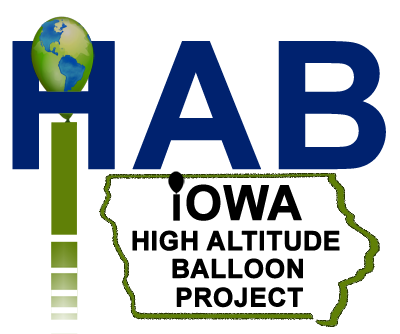CanisterLab ™
Tiny ‘Laboratories’ At Space's Edge
 A CanisterLab is an experiment that fits inside of a plastic 35mm plastic film canister. These film canister ‘laboratories’ are flown to the edge of space by high altitude sounding balloons. There are two to six high altitude missions flown by the iHAB Team each year. All of these missions can carry CanisterLabs.
A CanisterLab is an experiment that fits inside of a plastic 35mm plastic film canister. These film canister ‘laboratories’ are flown to the edge of space by high altitude sounding balloons. There are two to six high altitude missions flown by the iHAB Team each year. All of these missions can carry CanisterLabs.
Purpose:
Think big by thinking small. The CanisterLab program is designed to get students, researchers, engineers and people everywhere to be directly involved in science and space.
CanisterLab Flight opportunities
- CanisterLabs on high altitude balloon flights (contained).
The CanisterLabs are carried in a lightweight box that exposes them to the environment. The majority of CanisterLabs are flown in this manner. - CanisterLabs on high altitude balloon flights (exterior).
CanisterLabs can be mounted outside on the structure of the balloon platform. This can be useful for solar panels and antennas. Space is extremely limited with only one or two exterior mounted CanisterLabs on each flight.
CanisterLab Requirements
- No insects or other animals.
- Anything that sticks out of a CanisterLab must be preapproved.
- No volatile chemicals.
- No combustion
- No heavier than 75g
- Any device that emits a radio signal must be preapproved.
- Any liquids must be carefully contained.
Experiments Ideas
What can you do inside something as small as an film canister? Plenty!! Here are just a few ideas:
- Plant seeds: Compare the growth of plants grown from seeds flown at the edge of space with those left behind.
- Would a bubble wrap bubble pop? Is the drop in pressure enough to do the job?
- Small electronics
- Film cosmic ray experiment. Undeveloped camera film will often contain white streaks when developed after be exposed to cosmic rays at high altitude.
- Wet sponge. Would the water in a wet sponge boil off due to the lack of pressure.
- Two CanisterLabs, one beeps and the other listens. Sound can be used to determine altitude.
- Put a mini-marshmallow in and see it expand.
- Get two matching inexpensive digital clocks (the type found in $2 to $6 dollar watches). Put one watch in the CanisterLab. Use the other as a control. After the flight compare the time on clocks. See if the cold temperature affected the clock.
- Stamp computer controlled wind flow measurement.
- Paper that changes color with temperature.
- Canister-Cam Solar power battery charging. Charge a small battery with a small solar panel.
- Does an MP3 strip affected by the cosmic ray strikes at 100,000 feet?
- Temperature Measurement
- Pressure Measurement
- What can you think of?
The Environment at High Altitude.
The CanisterLab will be exposed to temperature down to 180 below zero. At peak altitude near vacuum conditions exist. Cosmic rays will occasionally strike at 100,000 feet. The environment nearly simulates that found in space.
